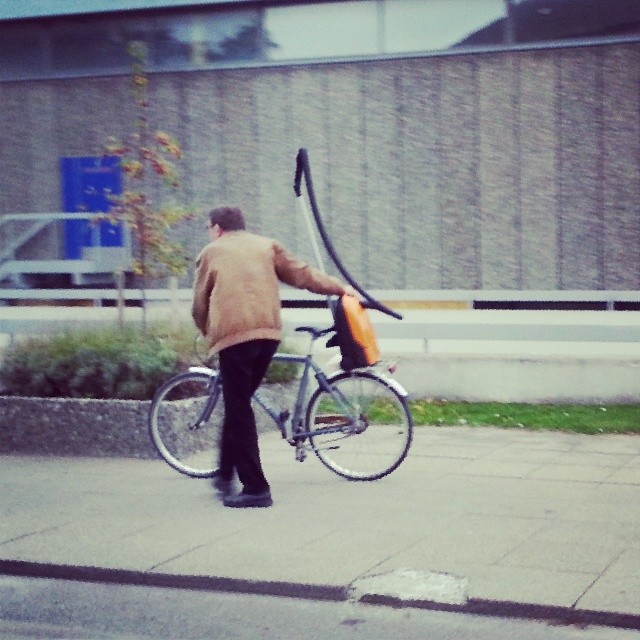
When I travel around with various lectures I tend to open with a crash course in understanding Copenhagen's bicycle culture. I explain how my friends and colleagues get a kick out of the demand for me to travel around the world talking about something as dull and everyday as 'bicycle culture'. I call it Vacuum Cleaner Culture. I have even made a logo to explain this.
We all have a vacuum cleaner, we've all learned how to use it and we all use it. But we don't go around thinking about our vaccum in the course of a day. Only when the bag is full do we roll our eyes and sigh. Kind of like when our tire is flat/chain is loose and we chuck our bike into the bike shop.
We don't have a 'stable' of vacuum cleaners. We don't buy vacuum cleaning clothes from our LVS or wave at other 'avid' vacuum cleaning 'enthusiasts' on the street. The relationship to our bicycles is the same as to our vacuum cleaners. They're both merely incredibly effective and useful tools for making our daily lives easier.

In my Four Goals for Promoting Bicycle Culture lecture I compare the marketing of bicycles from the dawn of the Safety bicycle in the late 19th century - and up to the early 1950's - with the marketing of vacuum cleaners in the post war years.

It was all mainstream marketing. Aimed at selling the product to regular citizens, as opposed to sub-cultural groups who fancied the Ordinary (penny farthing) and other contraptions.



When technology made vacuum cleaners accessible and affordable, the same marketing prinicples were applied as to bicycles.
ANYWAY... one of our readers sent us a link about a vaccum cleaner fetishist. A boy who LOVES his vaccum cleaners.
I got a kick out of this. Of COURSE there are people out there who fetishize about simple, practical machines. Why not? It's just not for everyone. (I bet he rides a lazy bike - a.k.a. e-bike, but that's another story...)
For fun I thought I'd search for stats about how DANGEROUS vacuum cleaning is. I figured this writer over at Spacing Toronto could use some inspiration for articles that don't promote cycling negatively.
Imagine that. According to the Royal Society for Prevention of Accidents in the UK, there were the following statistics regarding vacuum cleaner related accidents:
Object or product involved: Vacuum Cleaner
Year Victims
2000.... 9,118
2001.... 9,104
2002.... 10,783
Where are the safety nannies on THIS issue?! Every bloody household must have a vaccum cleaner! And these stats are only for the UK. How much carnage is going unchecked around the world?